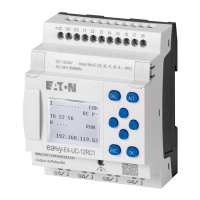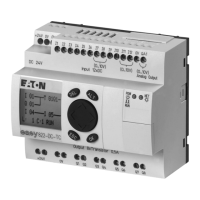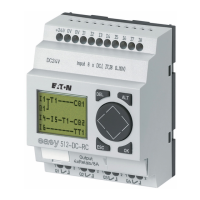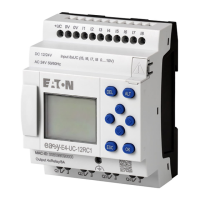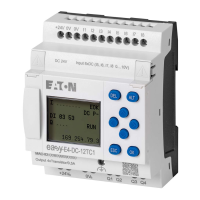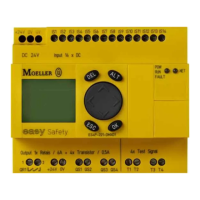4 Wiring with
4.11 Jumps
Operating instructions 05/10 MN05013003Z-EN www.eaton.com 135
4.11 Jumps
Jumps can be used to optimize the structure of a circuit diagram or to
implement the function of a selector switch. Jumps can be used for example
to select whether manual/automatic operation or other machine programs
are to be set.
You integrate
:1 jumps into your circuit in the form of a contact and coil.
Jumps consist of a jump location and a jump label.
4.11.1 Function
If the jump coil is triggered, the rungs after the jump coil are no longer
processed. The states of the coils before the jump will be retained, unless they
are overwritten in rungs that were not missed by the jump. Jumps are always
made forwards, i.e. the jump ends on the first contact with the same number
as that of the coil.
• Coil = Jump when 1
• Contact only at the first leftmost contact = Jump label
The "Jump label" contact point is always set to “1”.
Jumps :1 to :8
Boolean inputs/outputs Parameters
Contact Coil Input value Output value
x: Jump Destination Äx Jump Location - - - -
I2-------Ä:1
---------Ä:2
:1
T1-------ÄQ3
Contact Coil
:1 to :8
(can only be used as
first leftmost contact)
Ä:1 to Ä:8
→
Backward jumps are not possible with easy due to the way it
operates.
If the jump label does not come after the jump coil, the jump will
be made to the end of the circuit diagram. The last rung will also
be skipped.
Multiple use of the same jump coil and jump contact is possible
as long as this is implemented in pairs, i.e.:
Coil
Ä:1/jumped range/Contact:1,Coil Ä:1/jumped range/
Contact
:1 etc.
CAUTION
If rungs are skipped, the states of the coils are retained. The
time of started timing relays continues to run.
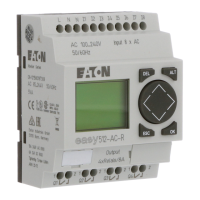
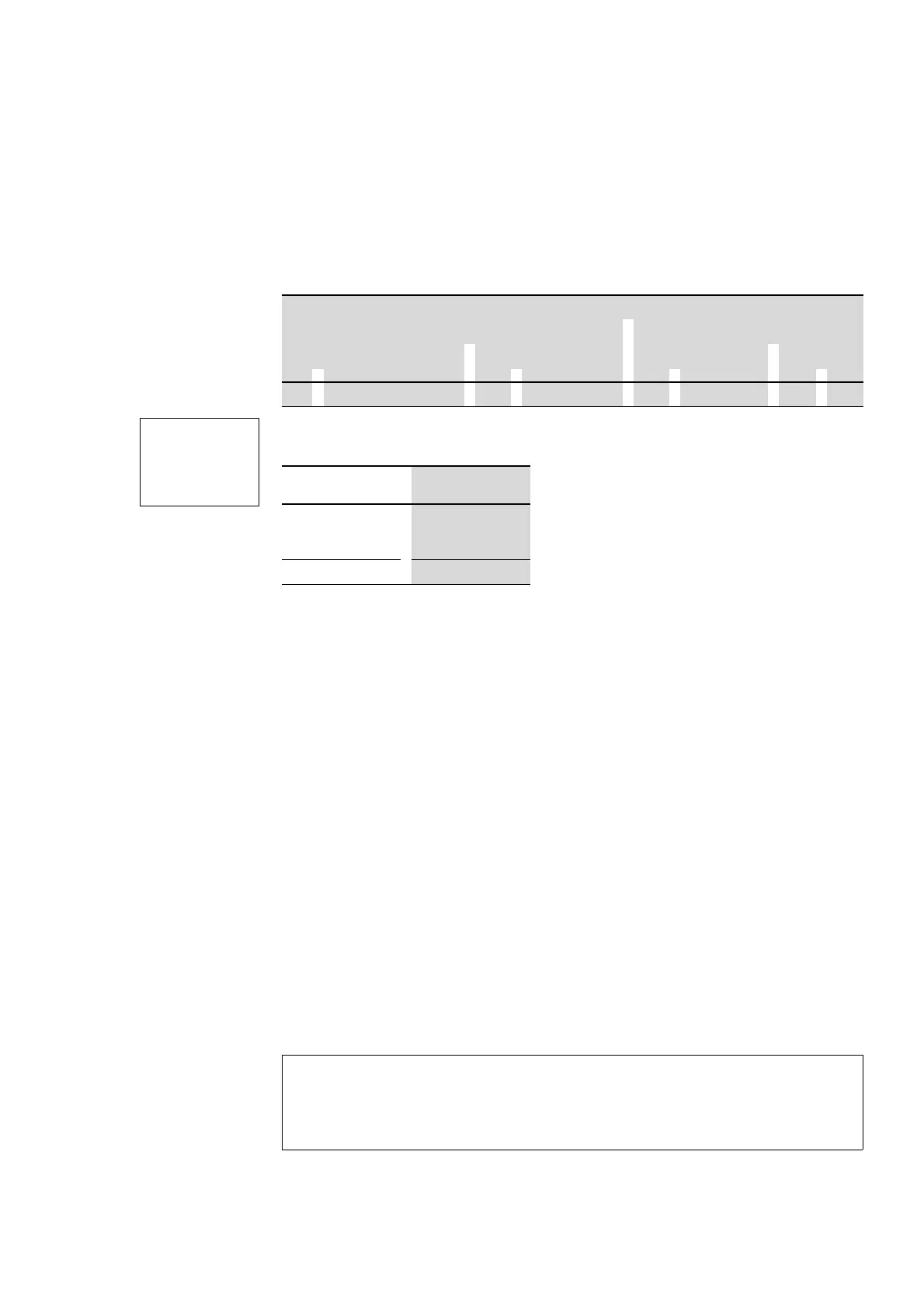